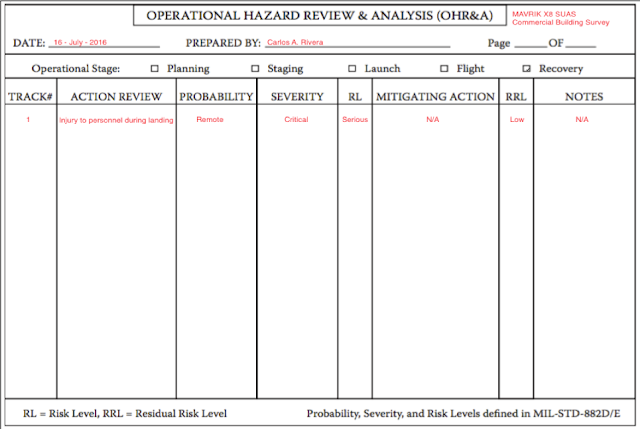The utilization of an
Unmanned Air System (UAS) for warfare carries similar ethical considerations as
one for a manned aircraft for scenarios where an operator is in the decision
making loop. Warfare brings difficult
questions and situations that till strain even the most experienced war
fighter. There are distinct differences
between what is legal and what is ethical during war. Modern nations enforce codes of conduct and
laws for military personnel. In the U.S.
there is the Uniformed Code of Military Justice (UCMJ), which applies to all
military members worldwide (USAF, 2016) . The UCMJ was designed to “promote justice, to
assist in maintaining good order and discipline in the armed forces, to promote
efficiency and effectiveness in the military establishment, and thereby to
strengthen the national security of the United States” (USMC, 2016) .
Combat operations require
additional guidelines in terms of rules of engagement. These are outlined by the Chairman of the
Joint Chiefs of Staff on Instruction 3121.01B.
The Instruction provides for self-defense guidelines as well as the
definition of the use of force to accomplish a mission against hostile forces (Chairman of the Joint Chiefs of Staff, 2016) . This is where ethical and moral
considerations come in to place when using UAS for national defense. A manned aircraft pilot is deployed to a
theater of operations with an intended purpose; there are Intelligence, Search,
and Reconnaissance (ISR) missions that can turn into attack opportunities. UAS can be deployed for long duration ISR
missions and identify threats with their payload.
The identification of a
threat and its ultimate elimination becomes controversial when automation is
included in the decision making process.
“It is not quite clear whether robotic/autonomous weapons can be
considered just as an evolution of smart weapons and another progress toward making
warfare more ethical – a view taken by Ronald Arkin (Arkin 2008), or whether
they would amount to the exact opposite: simply a new means of making war more
destructive and brutal and thus representing a very negative tendency” (Krishnan, 2009) . The decision to utilize force is affected by
the removal of the pilot from the aircraft, essentially out of harm’s way. While this is an inherent benefit to the
pilot, it can result in an erosion of the barriers to kill: “fear of being
killed and resistance to killing” (Lin, Abney, & Bekey, 2011) .
Training for UAS operators
must be different than the one for pilots of manned aircraft to ensure decision
making is not affected by geographic separation from combat. The fact that UAS operators are exposed to
their regular live stressors can add to their level of stress. This is a human factor that is unique in the
sense that an operator can be at home and spend time with their families, only
to report to work and perform interdiction missions that will lead to
killing. Research has proven that untrained
personnel making a decision that involves harming others causes moral dilemmas,
emotional conflicts, which requires a higher level of behavioral control (Majdandzic, et al., 2012) .
A high degree of automation
can inject a significant human factor for UAS operations. The US does not permit the use of Artificial
Intelligence (AI) to kill a person without human intervention. This is not the same in other countries; both
South Korea and Israel have deployed targeting turrets for border protection
that have the capability to identify and eliminate a person in the case of
unauthorized access (Parkin, 2015) . Utilizing AI to kill people does not
eliminate human factors, it simply moves them up during the development
phase. This is an inherent flaw with all
intelligent systems: they were designed by humans.
References
Chairman of the Joint Chiefs of Staff. (2016). Chapter
5: Rules of Engagement. Retrieved from Loc.gov: http://www.loc.gov/rr/frd/Military_Law/pdf/OLH_2015_Ch5.pdf
Krishnan, A. (2009). Killer Robots
Legality and Ethicality of Autonomous Weapons. El Paso: Ashgate
Publishing.
Lin, P., Abney, K., & Bekey, G. A.
(2011). Robot Ethics: The Ethicl and Social Implications of Robotics.
Cambridge: The MIT Press.
Majdandzic, J., Bauer, H.,
Windischberger, C., Moser, E., Engl, E., & Lamm, C. (2012). The Human
Factor: Behavioral and Neural Correlates of Humanized Perception in Moral
Decision Making. Vienna: PLOS.
Parkin, S. (2015, July 16). Killer
Robots: The soldiers that never sleep. Retrieved from BBC.com:
http://www.bbc.com/future/story/20150715-killer-robots-the-soldiers-that-never-sleep
USAF. (2016). Uniformed Code of
Military Justice. Retrieved from AU.AF.MIL:
http://www.au.af.mil/au/awc/awcgate/ucmj.htm
USMC. (2016). Military Justice Fact
Sheets. Retrieved from Hqmc.marines.mil:
http://www.hqmc.marines.mil/Portals/135/MJFACTSHTS%5B1%5D.html











